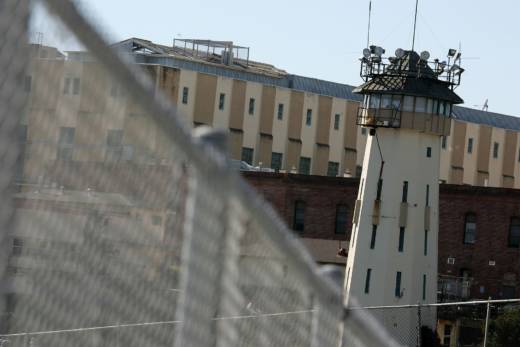Gov. Gavin Newsom’s proposal to spend close to $400 million over three years to battle substance abuse in California’s prisons is hitting a roadblock, after legislative staffers raised serious concerns about the sweeping plan.
Newsom's Sweeping Plan to Reduce Inmate Drug Overdoses Faces Pushback

The governor’s updated May budget includes a plan to drastically change how the state fights drug abuse in its roughly three dozen prisons, where an increasing number of inmates have overdosed in recent years.
California has, to date, spent tens of millions of dollars to stop the flow of drugs into state lockups, a strategy the new governor wants to upend by focusing more resources on curbing demand by using medication-assisted treatment to help prisoners fight addiction.
Newsom’s proposal has support from a top state lawmaker, public health officials, inmate advocates and the federal receiver who controls California’s prison medical care. And last Thursday, a state Senate subcommittee unanimously approved the plan.
But on Monday, a similar panel in the state Assembly significantly scaled back the proposal. Instead of spending $398 million and hiring 430 people over three years for treatment programs at every prison in the state, as the governor’s plan proposes, the Assembly subcommittee approved spending $64 million at just seven prisons.
Staff members of the Assembly Budget Subcommittee on Public Safety said they didn’t think state prison officials could effectively institute such a large program in such a short time frame.
“CDCR has had significant challenges in implementing large-scale proposals in a relatively short period of time,” the panel’s staff wrote Monday.
The panel’s decision reflected concerns raised last week by the nonpartisan Legislative Analyst’s Office (LAO), which also questioned the feasibility of the governor’s proposal.
“This is a large-scale implementation of a program that is untested,” said Luke Koushmaro, an LAO fiscal and policy analyst, during a Senate panel hearing on May 14. “The cost estimates are subject to significant uncertainty.”
The LAO specifically cast doubt on whether state prison officials would be able to hire enough medical staff to carry out Newsom’s plan and if they could realistically connect prisoners with treatment opportunities after their release, as the plan proposes.
Rather than implementing the governor’s plan statewide, the LAO recommended first piloting it at just three prisons.
The diverging proposals approved by both house panels will now be subject to budget negotiations between both houses, and a compromise plan will likely emerge before June 15, the deadline for enacting a new state budget.
A leading inmate advocate who has called for CDCR to reform the way it fights inmate drug addiction expressed alarm Tuesday about the Assembly’s plan.
“The subcommittee’s actions, if enacted, will lead to more deaths in prison and in the community from drug overdoses,” said Don Specter, executive director of the Prison Law Office. “It will also make the prisons more dangerous for the correctional staff and the people who live there because more people will be using drugs. Just like [in] the community, there is an opioid crisis in our prisons that deserves a comprehensive and immediate response.”
J. Clark Kelso, the federal receiver for California’s prison medical care system, also urged the Legislature to act quickly and aggressively.
“We have the highest death rate from overdoses in the country in our prisons,” Kelso told lawmakers. “It’s a problem of sufficient dimension that calls for an immediate response of the size and scope that’s being proposed.”
Newsom’s proposal calls for the creation of a program to offer buprenorphine, methadone and naltrexone — medications used to treat opioid addiction — to inmates at all of California’s prisons. Naloxone, which is used to reverse the effects of opioid overdoses, would also be distributed to at-risk inmates before their release.
Kelso noted that treatment plans have already been tested at several state prisons, and that a systemwide treatment program was urgently needed.
“Doing a pilot here doesn’t really solve the problem because we’ve got patients in every facility,” Kelso said. “We need to do this systemwide.”
The number of inmates who received medical assistance after drug overdoses increased from 469 in 2015 to 997 in 2018, according to CDCR data. State prison officials say 40 inmates died from overdoses in 2017, the latest snapshot the state has been able to provide.
State Sen. Nancy Skinner, D-Berkeley, who chairs Senate panels overseeing the state’s corrections department and its budget, backs Newsom’s plan. California’s current efforts to reduce the flow of drugs into prisons are not working, she said.
“Even with our increases over a number of years, where we have amped up drug-sniffing dogs, screenings [and] searches … we are seeing this dramatic increase in overdose deaths,” Skinner said.
